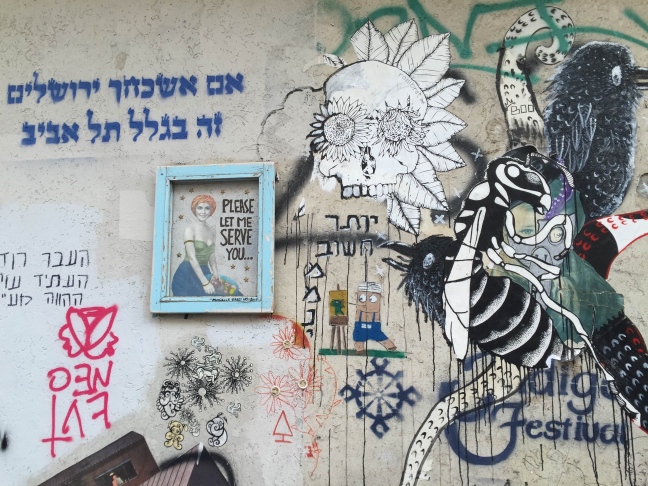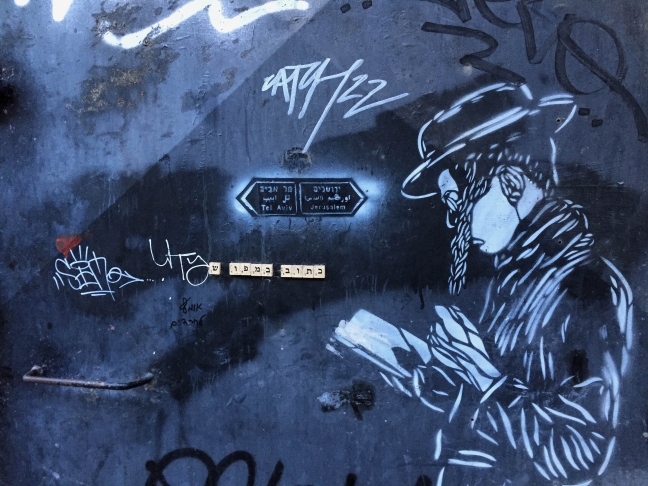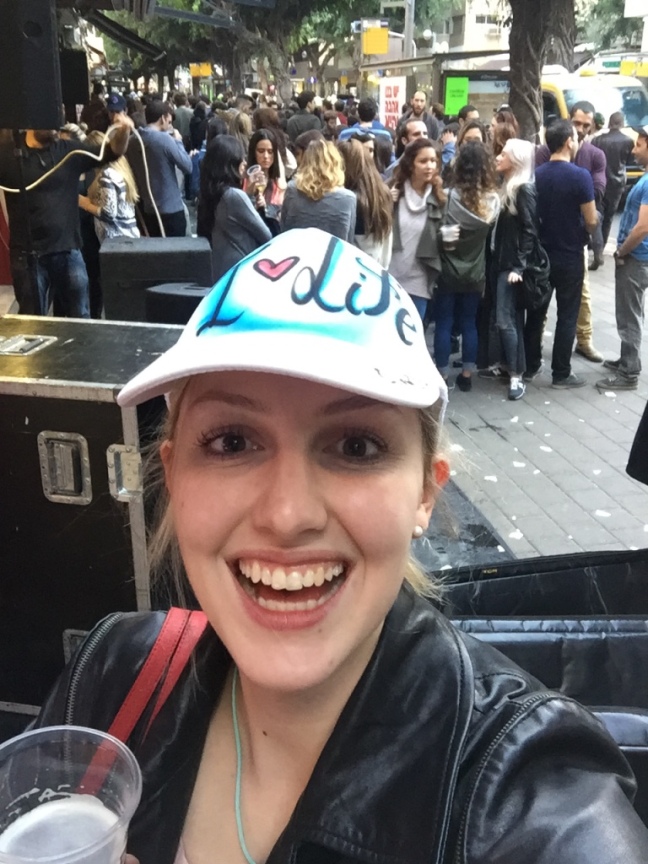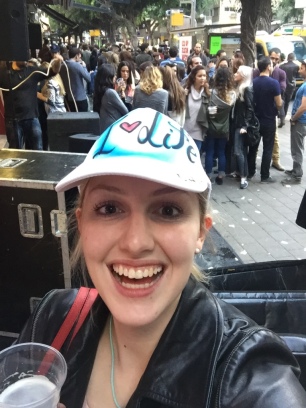To join a chocolate fight on Rabin Square, or to join a Streetwise Hebrew tour of Tel Aviv’s coolest neighborhood, Florentin? This was the tough choice I had to make last Friday afternoon. As you may or may not know, the Israeli weekend is on Friday and Saturday and marks Shabbat, the Jewish day of rest. The chocolate fight was, as the name suggests, a fight with liquid chocolate in Tel Aviv’s most famous square. It was to be filmed as a promotional trailer for Tel Aviv University’s “Chocolympics,” an annual campus event that raises money for children’s heart surgeries in third world countries. If you know a bit about my family history (my sister Luisa was born with a heart defect) and a bit about my chocolate addiction, you will be incredibly surprised that I chose instead to do the street art tour of Florentin. And what a great choice it was!
Guy Sharett is the multilingual Israeli tour guide who shows journalists, diplomats, world travelers (and people with lesser backgrounds) around Florentin. His life story sounds like the plot of a bestselling children’s book: Guy was raised by a tugboat skipper father and a ceramic artist mother in Ashdod, a Mediterranean town where sailors from all around the world anchor their boats. And so his childhood schoolmates spoke Georgian, Russian, Turkish, Greek, Marathi, Arabic and Romanian; he even learnt German from a Protestant pastor’s daughter (who happened to be his neighbor’s au-pair). From my own experience, I can also confirm that he speaks excellent French – when he learns my name at the beginning of the tour, he assumes I am French, and so for a good five minutes, we muse about languages and cultures in casual French dialogue. Merci beaucoup, Guy!

“If I forget you, Jerusalem/ It’s because of Tel Aviv”
This, written on the walls of Florentin in Hebrew, is a tongue-in-cheek take on Psalm 137:5: “If I forget you, O Jerusalem, May my right hand forget her skill.” Guy points the quote out to us on a wall splattered with street art: the wall stands next to the Tiny Tiny Gallery . To picture this gallery, imagine Harry Potter’s closet at the Dursleys’. This is of the same size and height, except it’s filled with paintings, not spiders. Anyway, the aforementioned wall is a bit like the graveyard of the gallery: once artists have enjoyed the temporary glory of being exhibited in the Tiny Tiny Gallery, they make their mark on the wall. And so a painted plastic duck sits proudly next to a somewhat creepy photo of a baby, and an old baby-blue frame protects a pin-up girl’s space from intrusion by other street art.

M A K E M E B E L I E V E I N L O V E A G A I N.
Can you see it? Look more closely at the photo above. Those abstract faces you see are in fact letters, and they spell this heartfelt desire. We’ve now stopped at a big square in Florentin, adorned with a fountain surrounded by pastel-colored mosaic stones around it. While the above mural sticks with me, the central piece Guy points out here pays homage to the “27 Club” of popular musicians who died at just 27 years. And so Amy Winehouse, Jimmy Hendrix, Jim Morrison and their peers stare down at us. We learn that the artist rented a crane at a cost of 5,000 skekels/day. During his lunch break, he would simply attach a post-it note asking the locals, “please do not move my crane.” The height of his work is a distinct advantage: part of street art’s appeal is that it is fleeting and ever-evolving; we learn that sometimes art here disappears from one day to the next, meaning Guy has to change his tour all the time (he seems delighted about this).

What else should you know about Florentin’s street art? Well, there is 13-year TRA who skips school to spray his fascination with Botox onto the walls, Dede who uses band-aids as imagery to express his feelings about changing identities and questions of doubt, and DIOZ whose huge works are among the most photographed and respected in the neighborhood. But besides art, I also learn about Ladino, a language that many of Florentin’s first settlers in the 1920s spoke. Florentin started as an outpost of Greek Jews from Thessaloniki, and they were soon joined by Hispanic craftsmen, artists and builders. To this day there are many workshops in this area that sell handmade leather shoes, wooden frames, antique furniture, anything really. Ladino was their lingua franca until recently: it is a Jewish language with heavy Hispanic influences and it has left a big artistic legacy, for example in songs that were written here. Unfortunately it is now dying out; Guy mentions that an old neighbor of his still speaks it, but he’s an exception.
I’m gonna end this post by explaining the photo that introduced the post with (going full circle, y’know): the Orthodox Jew you see in that first image faces two street signs: one pointing towards Jerusalem, the holy city; the other pointing towards Tel Aviv, ‘sin city.’ Why is this remarkable? Because he chooses to send his prayers towards the latter :-).







